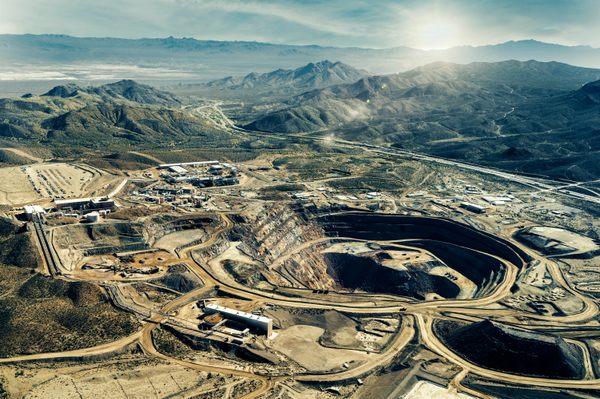Rare earth elements, a series of chemically very similar elements, have been much in the news in recent years because they are critical in many high-tech applications. This deposit at Mountain Pass, California, was discovered in the late 1940s and supplied much of the global demand for decades. However, the uses of rare earths were not nearly as extensive as they are now, and as applications grew so did competition, mostly from China. Meanwhile, production costs at Mountain Pass also soared. By 2002 the mine had shut down.
The deposit at Mountain Pass is in an “igneous limestone,” a so-called carbonatite (pronounced “car-BON-uh-tite”). Carbonate minerals are nearly always found in sedimentary rocks like limestone, and they have either directly precipitated from water, or via living things from water, with the biological debris then incorporated into the limestone. A carbonatite, by contrast, was originally magma and cooled from the molten state. Carbonatite deposits are relatively uncommon, and they often include high concentrations of rare earth elements.
Right now, China accounts for the majority of the world’s rare earth mining and processing facilities. Because of national defense concerns about dependence on a foreign supplier, efforts to reopen the Mountain Pass Mine began in the 2010s. After several false starts, the mine seems to be operating routinely. The efforts are an echo of the “strategic minerals programs” that lasted into the 1960s, where the U.S. government subsidized the production of materials deemed vital to national security.
One side note is that the Mountain Pass carbonatite is slightly radioactive due to the presence of thorium, a naturally occurring radioactive element. In fact, this is what originally led to the discovery of the deposit in 1949, when prospecting for uranium with a Geiger counter had become the mid-20th century equivalent of panning for gold. The slight radioactivity also complicates the safe extraction of the rare earth elements, because waste products tend to be radioactive and require special handling.

